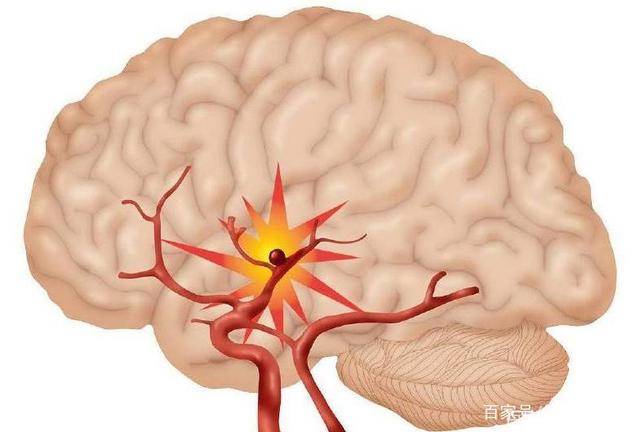In the past, a distant relative of mine, a 26-year-old young mother, suddenly passed away due to a sudden cerebral hemorrhage. She stopped breathing on the way to the hospital. She left behind a 2-year-old child, which is truly lamentable.
In recent years, the incidence of cerebral hemorrhage in China has been very high, and it is one of the diseases with the highest mortality rate. Its incidence in China is six times higher than in Western countries. The main reasons for its occurrence are related to vascular changes in the brain, as well as closely linked to diabetes, high cholesterol, high blood pressure, vascular aging, and smoking. Patients with cerebral hemorrhage often suffer sudden onset due to emotional agitation, excessive fatigue, and the early mortality rate is very high, with many survivors experiencing sequelae. This disease, which used to be more common in middle-aged and elderly people, is increasingly occurring in young people, especially under conditions of high stress, staying up all night, and continuous overtime work. As a serious illness that usually results in either death or disability once it occurs, early detection, prevention, and treatment are crucial.
These are the warning signs of cerebral hemorrhage:
Atherosclerosis
The blood vessels in our brains are very abundant and fragile. If the blood vessels in the brain harden, they become vulnerable, and can easily rupture upon any stimulation. Atherosclerosis in the cerebral arteries is the underlying pathology leading to cerebral hemorrhage.
Tongue stiffness
Atherosclerosis is often a necessary condition for cerebral hemorrhage, and tongue stiffness is an indication that cerebral hemorrhage is imminent. When the tongue enlarges, its base becomes stiff, speech becomes unclear, swallowing becomes difficult, and drooling at the mouth occurs, it is a sign of a dangerous situation that requires immediate attention.
Sudden dizziness
Before a sudden cerebral hemorrhage occurs, there is usually a feeling of dizziness, inability to stand, difficulty lifting the feet, and even falling directly to the ground.
Darkening of vision
This usually manifests as a sudden darkening of vision, or difficulty seeing with one eye, which is different from the darkening caused by common anemia.
Unilateral numbness
Weakness in the upper or lower limbs, accompanied by numbness in the fingers, especially the little finger, or numbness on one side of the body, should be taken seriously as it may indicate a problem in the brain vessels.
Frequent nosebleeds
Hypertensive patients often experience nosebleeds, and within six months, there is a high possibility of cerebral hemorrhage occurring. Blood pressure should be controlled and medical attention sought promptly.
Foods to prevent cerebral hemorrhage:
Hawthorn
Total flavonoids in hawthorn have the effect of dilating blood vessels and maintaining long-term blood pressure reduction. It can increase myocardial contractility, dilate coronary arteries, and effectively prevent and treat atherosclerosis.
Oats
The linoleic acid, oleic acid, lecithin, saponins, selenium, magnesium, and other minerals in oats can lower serum cholesterol, reduce cholesterol deposition on arterial walls, and prevent atherosclerosis.
Rubus crataegifolius Tea
This rare high-altitude plant, known as “Fairy Grass” in Chinese medicine, can dilate blood vessels and lower blood pressure. It has a unique therapeutic effect on hypertension and high cholesterol.
Black fungus
The polysaccharides in black fungus can effectively reduce total blood cholesterol and triglyceride levels, shrink atherosclerotic plaques that have already formed. Therefore, it can prevent atherosclerosis and coronary heart disease. Research has shown that consuming 3 grams of dried black fungus per day can reduce the incidence of cerebral hemorrhage and heart attacks by 30%.
Green tea
The catechins in green tea can reduce the content of bad cholesterol in the blood, increase blood vessel flexibility and elasticity, and prevent vascular hardening.
Ginkgo fruits
Effective in preventing blood clotting, improving blood circulation, preventing the formation of blood clots in the brain, and also dilation of blood vessels, preventing atherosclerosis, myocardial infarction, and more.
In addition to dietary therapy, here are 4 key points to prevent cerebral hemorrhage:
1. Maintain stable emotions
Sudden emotional changes and mental conflicts can stimulate the sympathetic nerves, leading to vasoconstriction and other autonomic reactions, triggering cerebral hemorrhage.
2. Control hypertension
Hypertension is a significant cause of cerebral hemorrhage, so it is essential to control blood pressure to prevent cerebral hemorrhage. Maintain stable blood pressure. Large fluctuations in blood pressure “peaks” and “valleys” within 24 hours can damage the blood vessel walls.
3. Balance work and rest
Whether it’s physical labor or mental labor, avoid excessive fatigue. Overworking is a common cause of sudden cerebral hemorrhage in young people.
4. Exercise appropriately
Enhancing physical fitness and improving resistance are key to prevention. Even in the cold winter, exercise should be maintained, but as blood vessels shrink and blood pressure rises in winter, it’s important to stay warm and choose suitable exercise based on one’s health condition.


